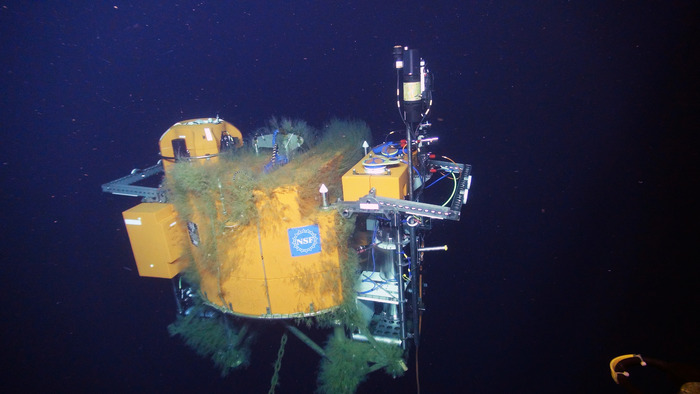Ocean waters off the Oregon and Washington coast are some of the most biologically productive in the world. One way to estimate productivity is by measuring chlorphyll concentrations. Within the ocean waters, very small single-celled plant-like organisms and algae, called phytoplankton, use a pigment called chlorophyll-a to produce food. This pigment, when exposed to a certain wavelength fluoresce, hence measurement of chlorophyll can be used as a proxy for phytoplankton concentrations. These microscopic marine organisms are also significant because they are an important part of the oceans' food chain.
NASA uses sensors on satellites to broadly measure chlorphyll, however, only surface, very near-surface measurements can be made. In contrast flourometer instruments on the Cabled Array Shallow Profiler Mooring stationary platforms and on the profiling Science pods at Slope Base, the Oregon Offshore Site, and Axial Base provide continuous real-time year-round measurements to 200 m beneath the oceans surface - over 27,000 profiles have been completed since 2015. Fluorometers are also included on the Deep Profiler Mooring vehicles. These data provide measurements of thin, ephemeral, biologically-rich layers that cannot be made using satellites, yet are highly complementary to them.
Fluorometers measure patterns of fluorescence. On the Cabled Array there are three different devices to measure different properites. A 2-wavelength fluorometer, provided by WET Labs (ECO Triplet-w), specifically examines chlorophyll-a fluorescence and optical backscatter (red wavelengths). The 3-wavelength fluorometer, provided by WET Labs (ECO Triplet-w), measures chlorophyll-a fluorescence, optical backscatter (red wavelengths), and colored dissolved organic matter in the seawater.


